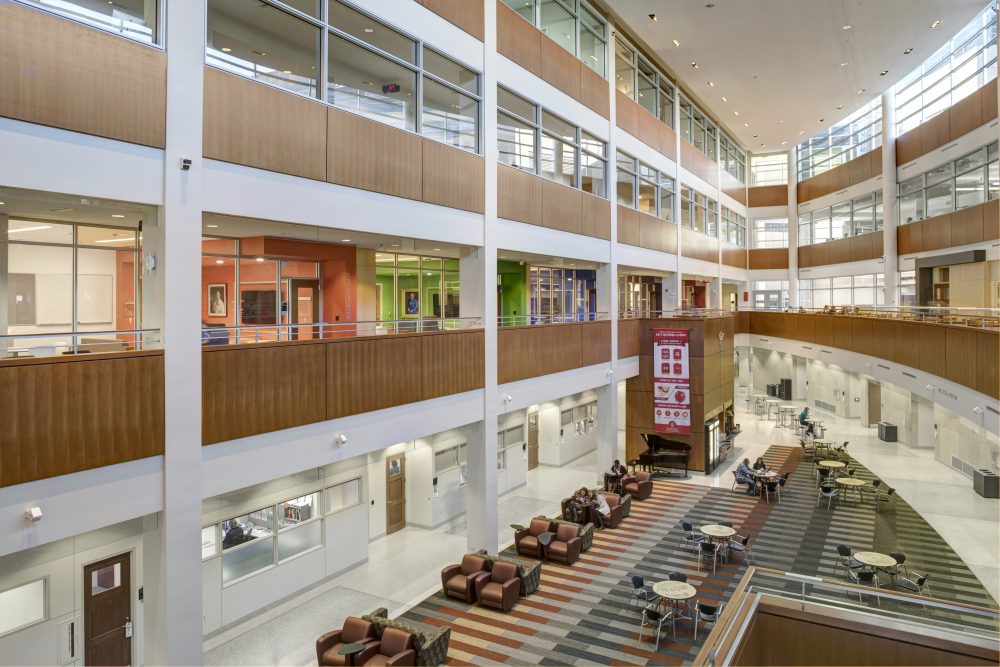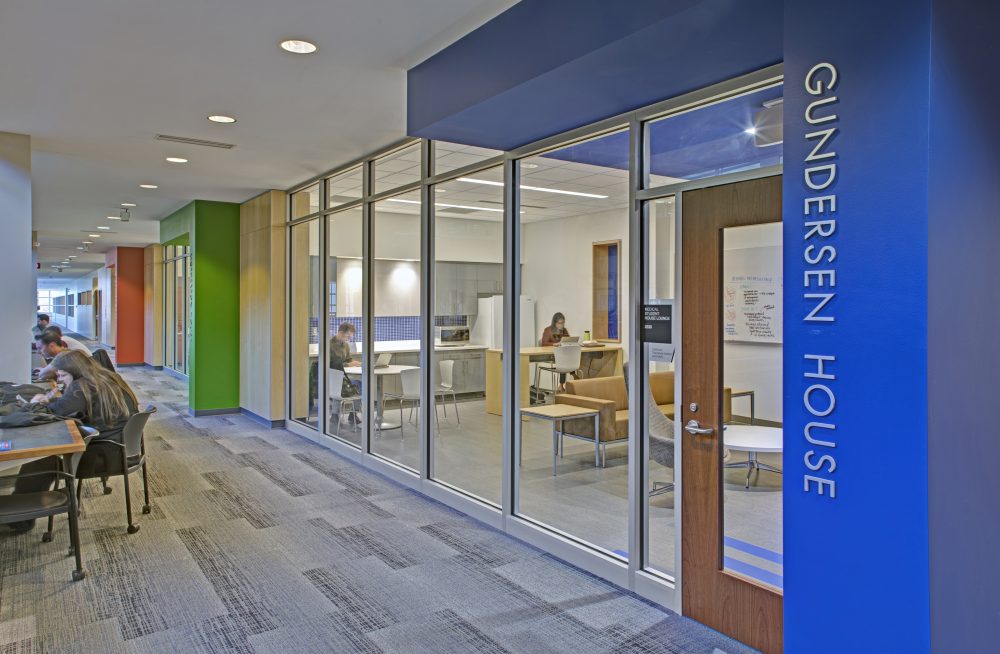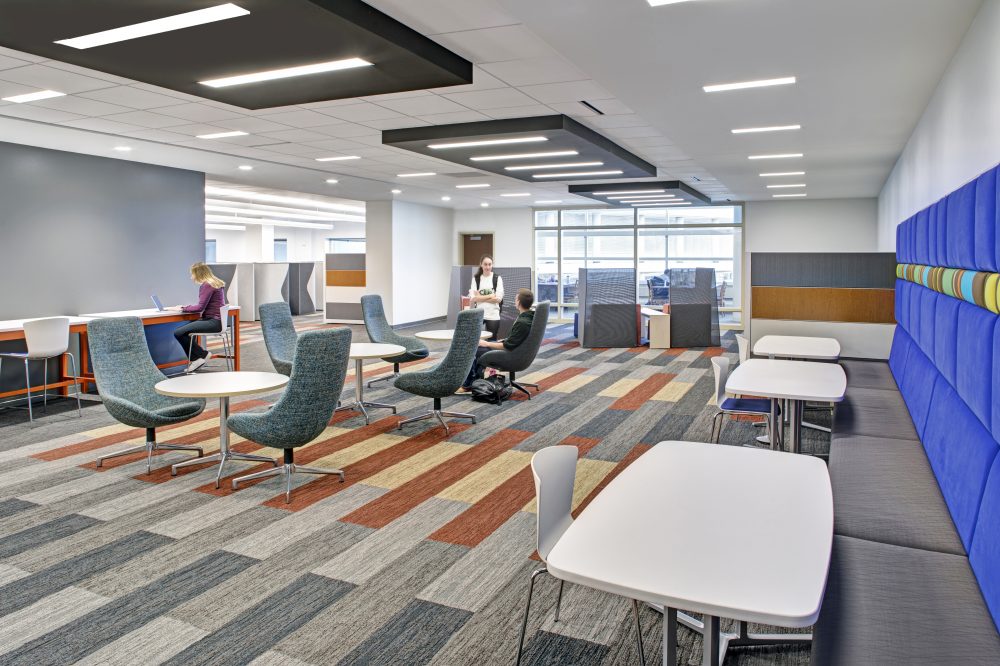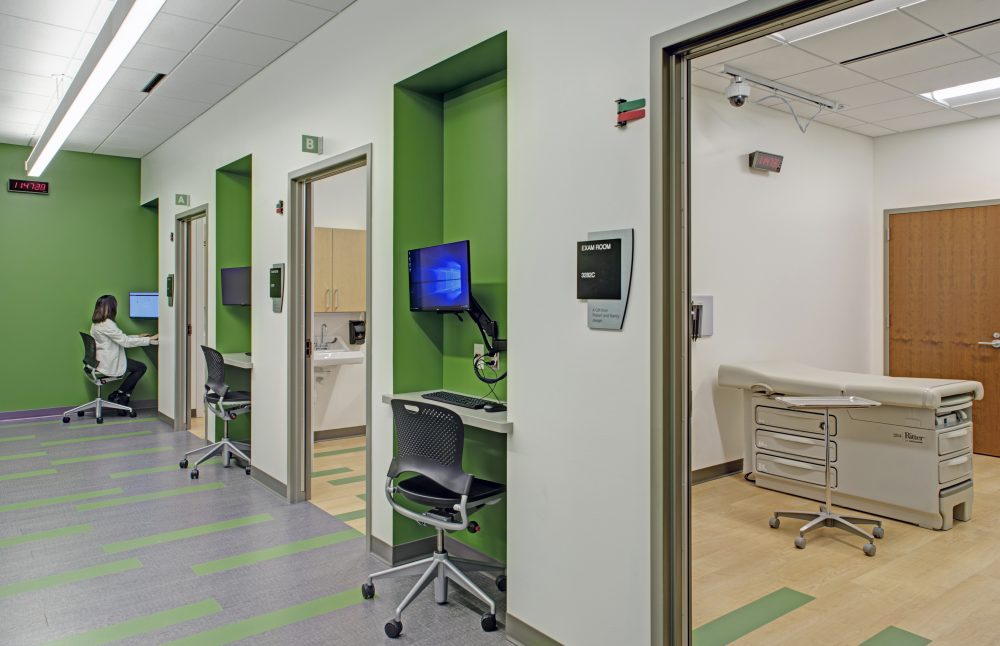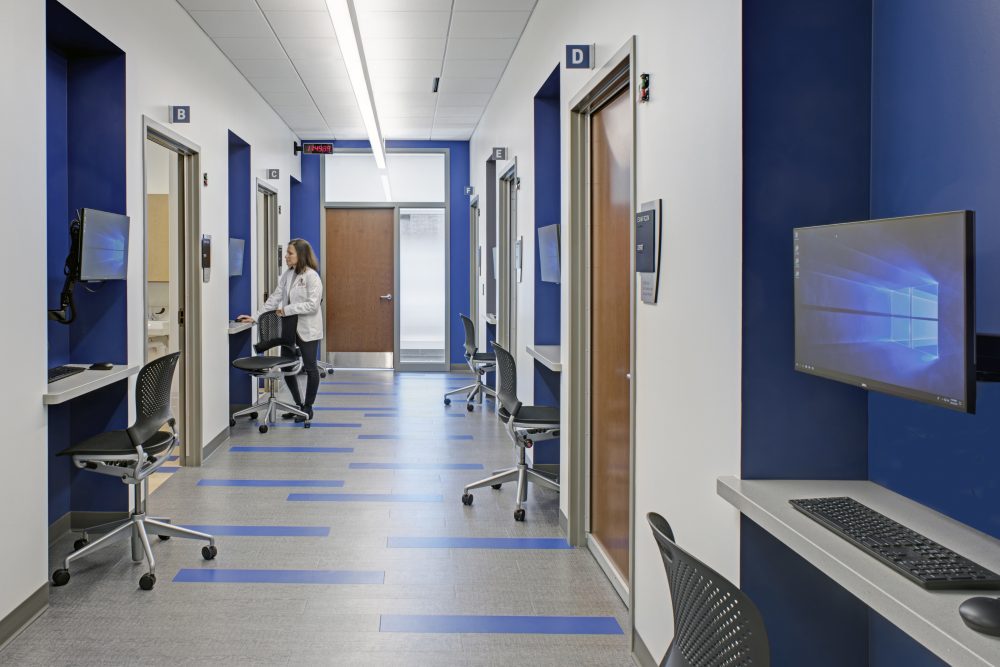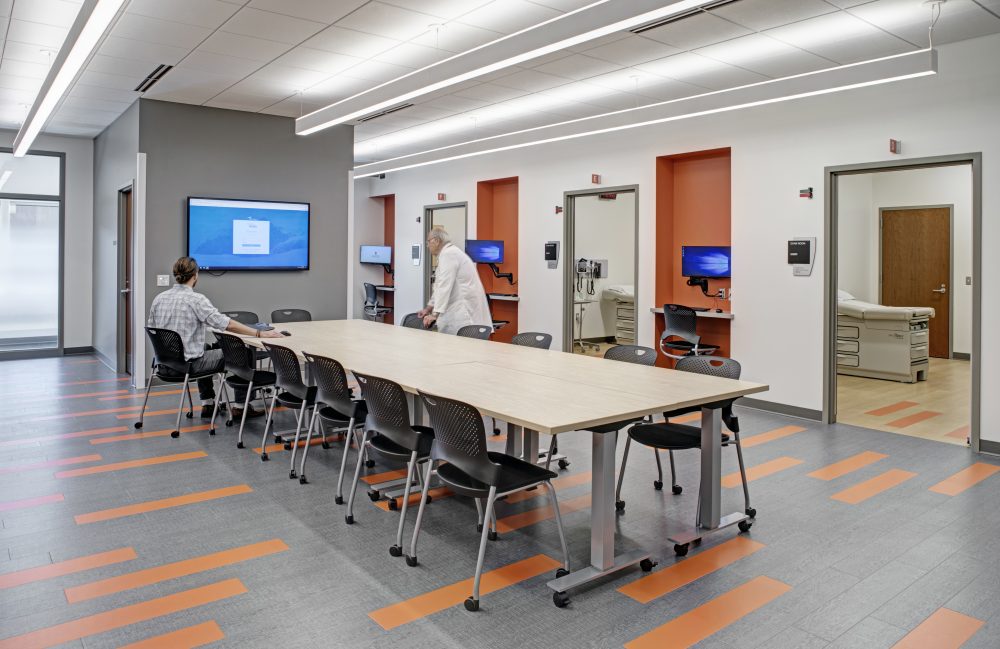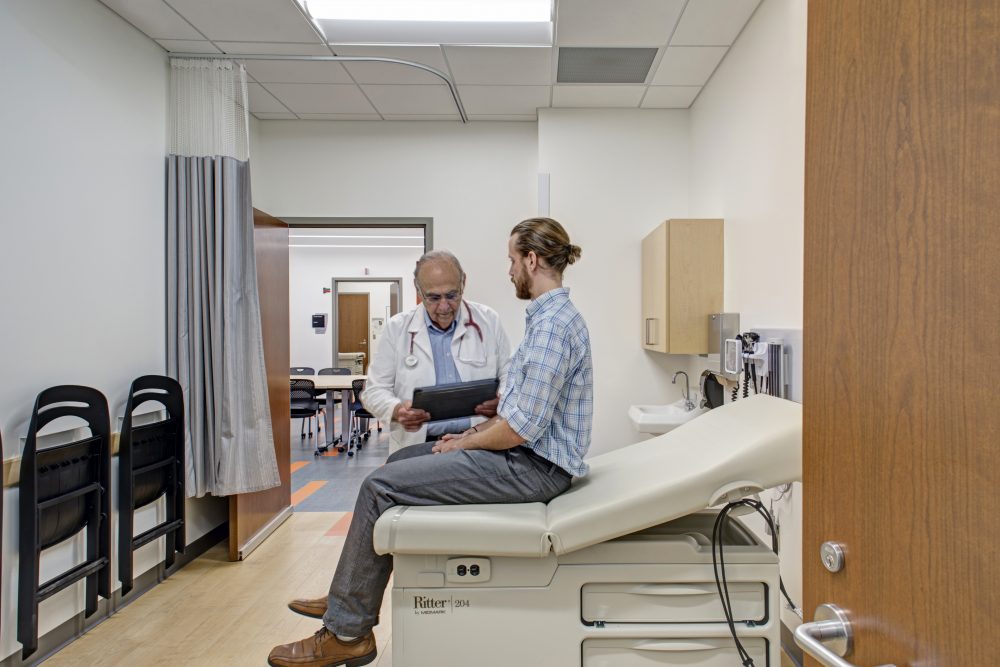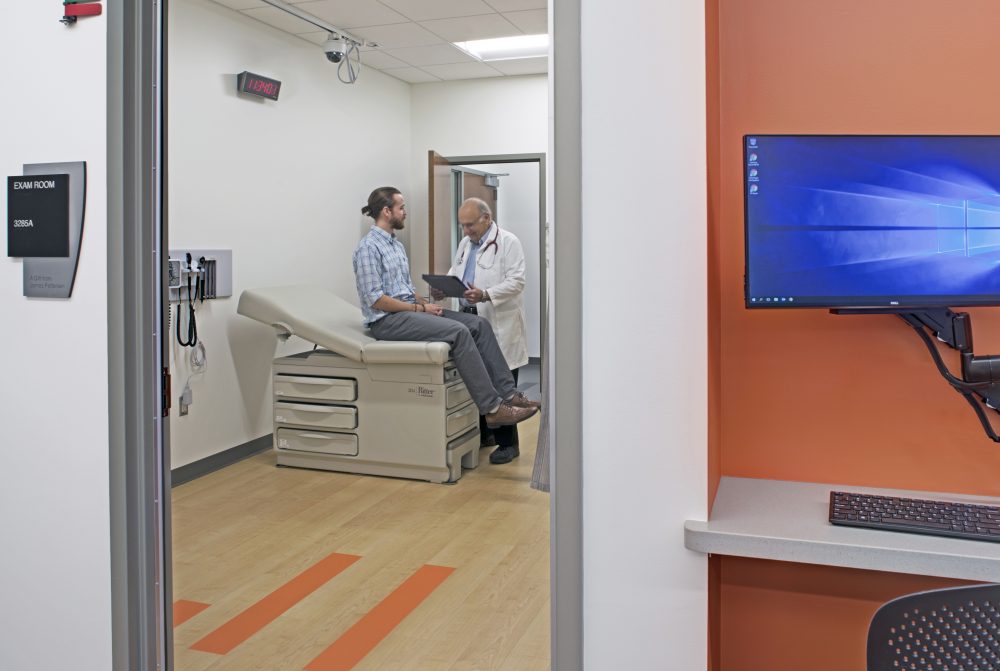Health Science Learning Center, UW-Madison School of Medicine & Public Health

-
ClientUniversity of Wisconsin-Madison
-
SQ. FT.140,000
-
Budget$18,500,000
-
Market
-
Year2018
The $18.5 million, 140,000-gross-square-foot transformation of the Health Science Learning Center at the University of Wisconsin-Madison, School of Medicine and Public Health aligned physical infrastructure with the school’s Academic Affairs Curriculum Enhancement Project. This initiative has three key components to support the University’s goal to be a national leader in health care and advance the well-being for the people of Wisconsin and beyond:
- Curriculum alignment will enable revolutionary changes in curriculum through methodologies that support inter-professional collaboration and active learning, such as problem-based learning (PBL), team-based learning (TBL), and simulation-based learning (SBL);
- Integrated simulated clinical experiences accelerate student’s exposure to “real-life” scenarios and;
- Enhanced experiences created through the development of “community areas” that are widely represented in this facility and present opportunities for students to build life-long relationships with these future alumni.
Instructional spaces were designed to allow for innovative delivery of course content. For example, a 4,400-SF active learning classroom can be one large space or convert to four separate learning environments. The space is enclosed by operable partitions that function like garage doors. When the partitions are closed, this space features 360 degrees of writable surface for collaborative work. The furniture is mobile and able to be reconfigured to support different types of group work. When the partitions are opened, the areas surrounding the learning classroom become a public zone for students to study alone or in groups.
Enhanced experiences for students are supported through a variety of customized community areas, which make up 48 percent of the facility, notably the Student Houses that honors tradition and facilitates cohorts to progress together through the program and build life-long relationships. First year medical students enter a card accessed, color-coded house that is assigned a mascot and named after a celebrated alumnus of the school. The 440-SF space consists of a small kitchen, flat screen TV, social and study area.
Color-coding is used throughout the building for wayfinding as well as to tell the story of the Student Houses and the complementary color-coded skill pods in the Clinical Skills Simulation Suite, where the complete cycle of patient care is simulated. Students role-play as standardized patient seeking ob/gyn care, for example, and are briefed on their symptoms, while other medical students fill the role of doctor. Write-up stations are outside the exam rooms for students to enter data in a timely fashion. Teaching labs are located outside of the patient rooms for students to play back video of the training session and observe their skills.
Unique to schools of medicine is the Silent Study room, accommodating students who are in the building around the clock studying or conducting research. The room provides complete silence for study or a place for students to nap and refresh at any time. The Silent Study space is in carved out space from the adjacent Ebling Library, the largest component of the project, which underwent modest modifications that entailed space consolidations and relocation of books.
A new Center for Diversity, relocated on the first floor of the four-story building, supports the school’s initiative to create a pathway to medical education for native Americans. The project also included modest upgrades to the Ebling Library to better integrate and complement the overall Center.
As a result of these design improvements, the school received an eight-year accreditation.
